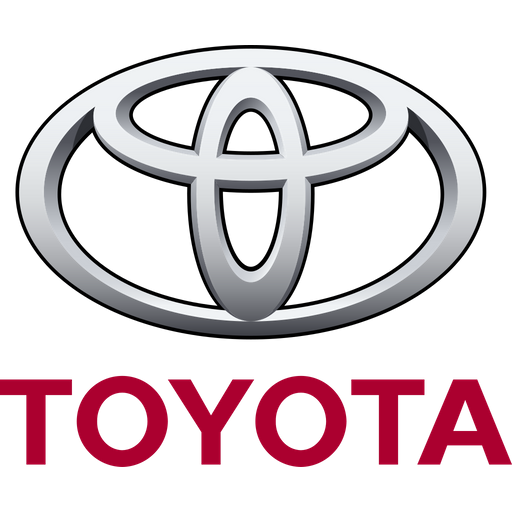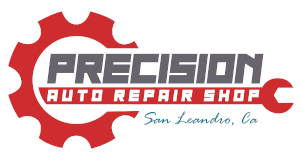TOYOTA SEQUOIA
TOYOTA
 We’re a top rated local Toyota Sequoia repair services shop in San Leandro, CA. Toyota Sequoias are some of the larger vehicles in the Toyota lineup, which makes them a good option if you’re looking for a utility vehicle that can handle a lot of cargo and a lot of passengers at the same time. Despite the power and durability of these impressive SUVs, they still need a fair amount of maintenance and TLC, and you deserve a mechanic that will put in the work to keep your Sequoia working for as long as possible. If you’re looking for a skilled mechanic to keep your Sequoia in top condition, Precision Auto Care is happy to help. We serve the San Leandro, Castro Valley, Hayward, Oakland, and San Lorenzo areas, and are always happy to take on another Sequoia. Want to learn more about some of the Sequoia’s maintenance concerns and common problems? Keep reading, we’ll talk about some of the issues we’ve tackled and why it’s important to get the maintenance done.
We’re a top rated local Toyota Sequoia repair services shop in San Leandro, CA. Toyota Sequoias are some of the larger vehicles in the Toyota lineup, which makes them a good option if you’re looking for a utility vehicle that can handle a lot of cargo and a lot of passengers at the same time. Despite the power and durability of these impressive SUVs, they still need a fair amount of maintenance and TLC, and you deserve a mechanic that will put in the work to keep your Sequoia working for as long as possible. If you’re looking for a skilled mechanic to keep your Sequoia in top condition, Precision Auto Care is happy to help. We serve the San Leandro, Castro Valley, Hayward, Oakland, and San Lorenzo areas, and are always happy to take on another Sequoia. Want to learn more about some of the Sequoia’s maintenance concerns and common problems? Keep reading, we’ll talk about some of the issues we’ve tackled and why it’s important to get the maintenance done.

REQUEST A CALLBACK
Major Tune-Up
Looking for a top-rated local auto repair shop to tune up your vehicle? We offer major tune-up services including spark plug replacement, oil change, belt and hose replacement, windshield wiper replacement, fluid refilling, tire check, balancing and rotation, and more. Schedule an appointment today!
Brake Replacement
Is it time for new brakes? Are you hearing any squeaking or screeching coming from your car? It may be just your brake pads, or you might need a complete brake replacement. Just bring your car in or have it towed to our shop and we’ll take a look.
TRANSMISSION FAILURE
Early transmission failure is something basically no car owner wants to deal with, unfortunately, it’s also one of the more common problems we see with the Toyota Sequoia. Failure tends to happen most often just before you reach 100,000 miles, and this is one of the rare cases where the transmission seems to fail outright, rather than having individual parts that go first and cause a more serious problem. Regular transmission maintenance can help make this less likely – but there isn’t a good want to guarantee that the transmission isn’t going to go out. In the case that your transmission does fail your mechanic will talk to you about rebuilt or replacement options, assuming there is a chance to rebuild.
VSC TRACTION CONTROL
We see a lot of Sequoia owners coming in with this light alert coming on and are not sure what the cause is. Especially when this light comes on with the check engine light, owners can be concerned that there are issues with multiple systems in their vehicle. The good news is that the VSC traction control light and the check engine light alerting together is usually a sign that one of two things is causing the problem, the O2 sensor or the gas cap. Both are typical fixes that your mechanic should be able to handle quickly. If the VSC traction light comes on by itself that usually means that there was an issue with the system and that your traction control has turned off. By itself, that’s not a huge problem, but it can mean that you’ll have a little less traction and control when driving in bad weather. In this case, it’s important to get your vehicle to the mechanic sooner rather than later so they can diagnose the problem and make a repair.
 BRAKE PROBLEMS
BRAKE PROBLEMS
Depending on who you ask the brake issue or the transmission issue with some models of Sequoia is going to be the most serious concern with the vehicles. This issue is typically a problem of premature wear and tear, particularly on the front calipers and rotors, though any part of the brake system can be affected. Symptoms of brake problems in your Sequoia usually include excessive vibration while braking, braking noise, and slower-than-usual brake response. While not typically serious enough to cause accidents, all of those problems make it harder to brake effectively and put you and any passengers in your Sequoia at greater risk. Replacement of the affected parts is typically the best repair option, but you can also use regular brake maintenance to help prevent any serious issues by detecting wear and tear sooner.
_
LOWER BALL JOINT ISSUES
There is a recall out for some models of Sequoia’s ball joints. The problem is that the joints wear prematurely, causing a variety of problems that can be a serious safety issue. Because of the recall, repairs are typically free at any approved Toyota mechanic.
Symptoms of a failing lower ball joint include:
1. Clunking and rattling while driving
2. Steering feeling loose or unresponsive
3. Uneven tire wear and tear, particularly on the front tires
4. Excessive cabin vibration while driving.
If you notice any of those problems it’s important to get your Sequoia to a mechanic as soon as possible.
_
OXYGEN SENSOR FAILURE
O2 sensors are important for the normal function of your engine, but they also undergo a lot of stress from the heat and pressure of the engine, which means that they’re a relatively common part failure for a wide variety of vehicles. While replacement it typically easy, it’s important to get the O2 sensor replaced quickly because having a faulty O2 sensor can decrease your fuel economy and put your engine at risk for improper fuel combustion and other issues. Your O2 sensor is also one of the most common causes of an engine light alert. Need a maintenance appointment for your Sequoia? Contact Precision Auto Care to schedule your next appointment, today.
_
